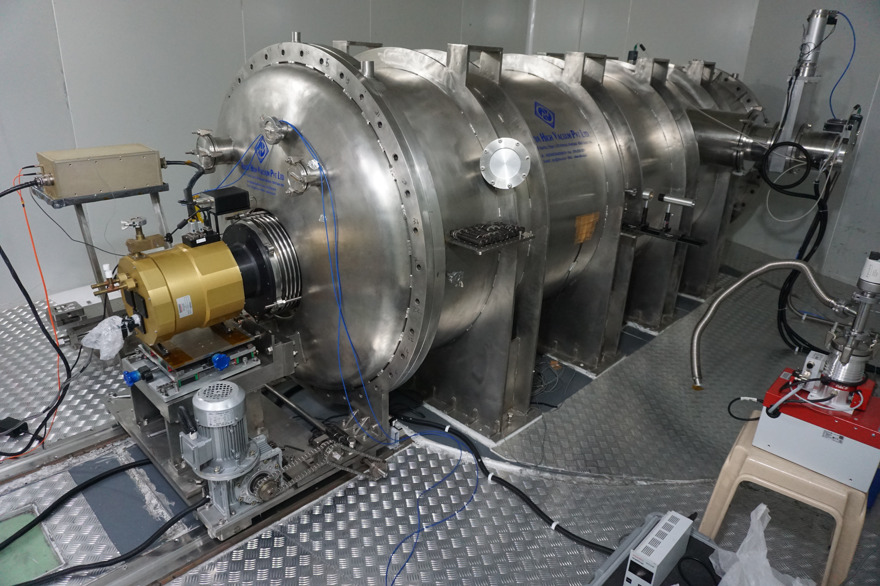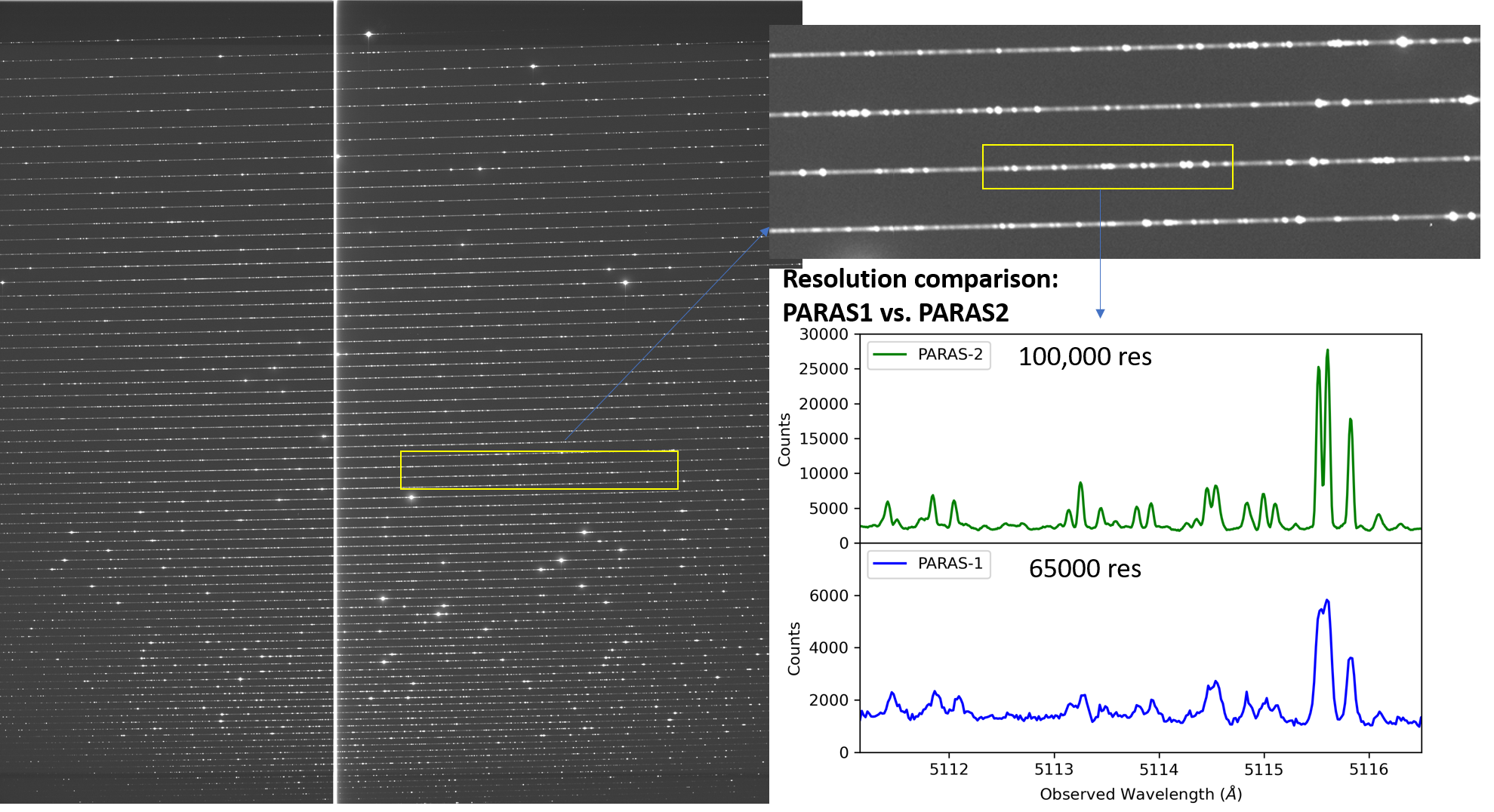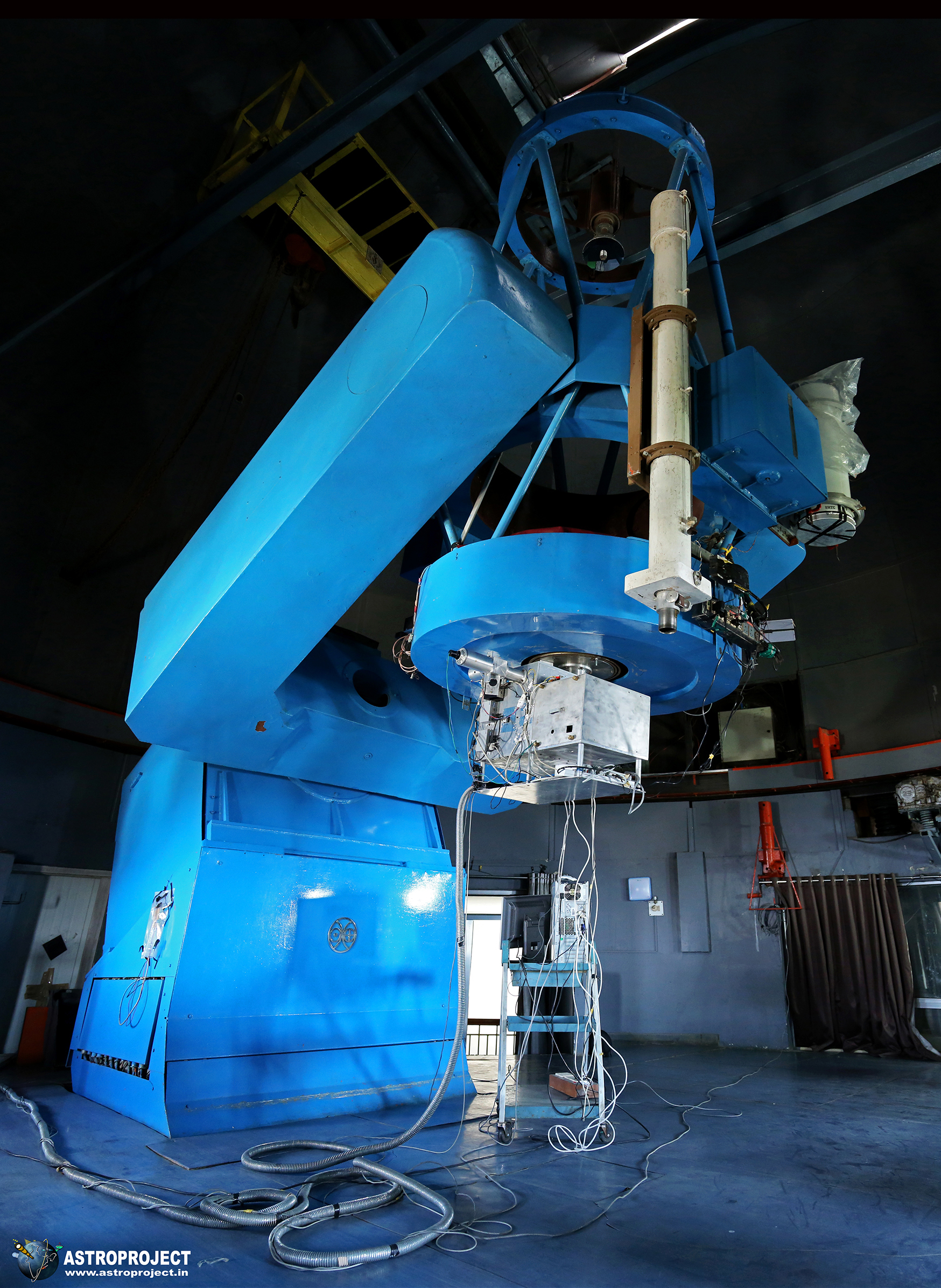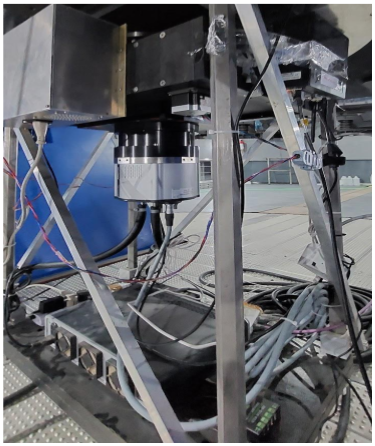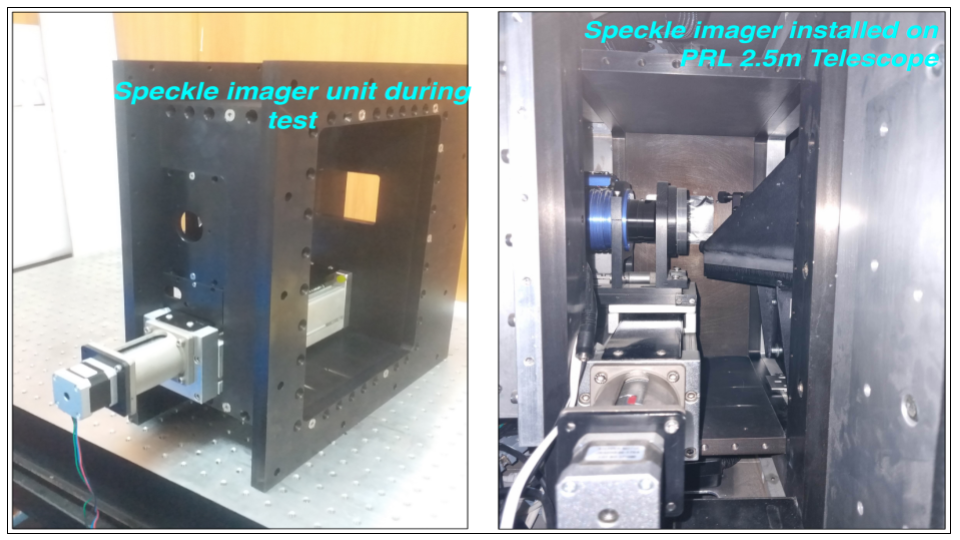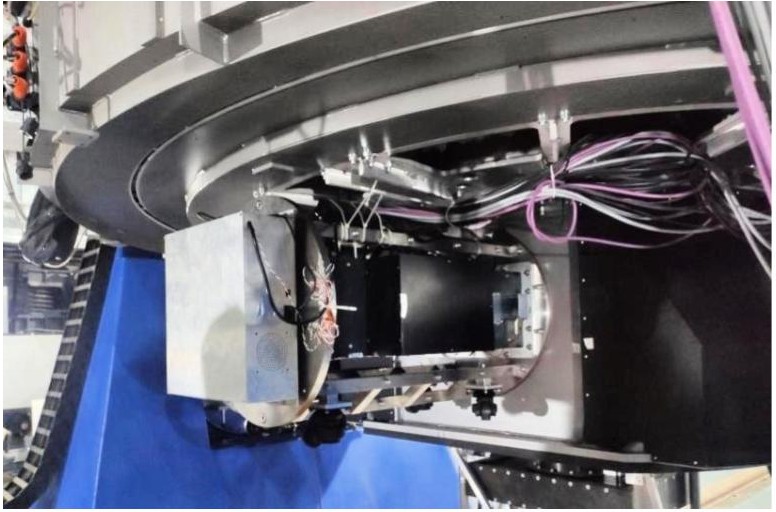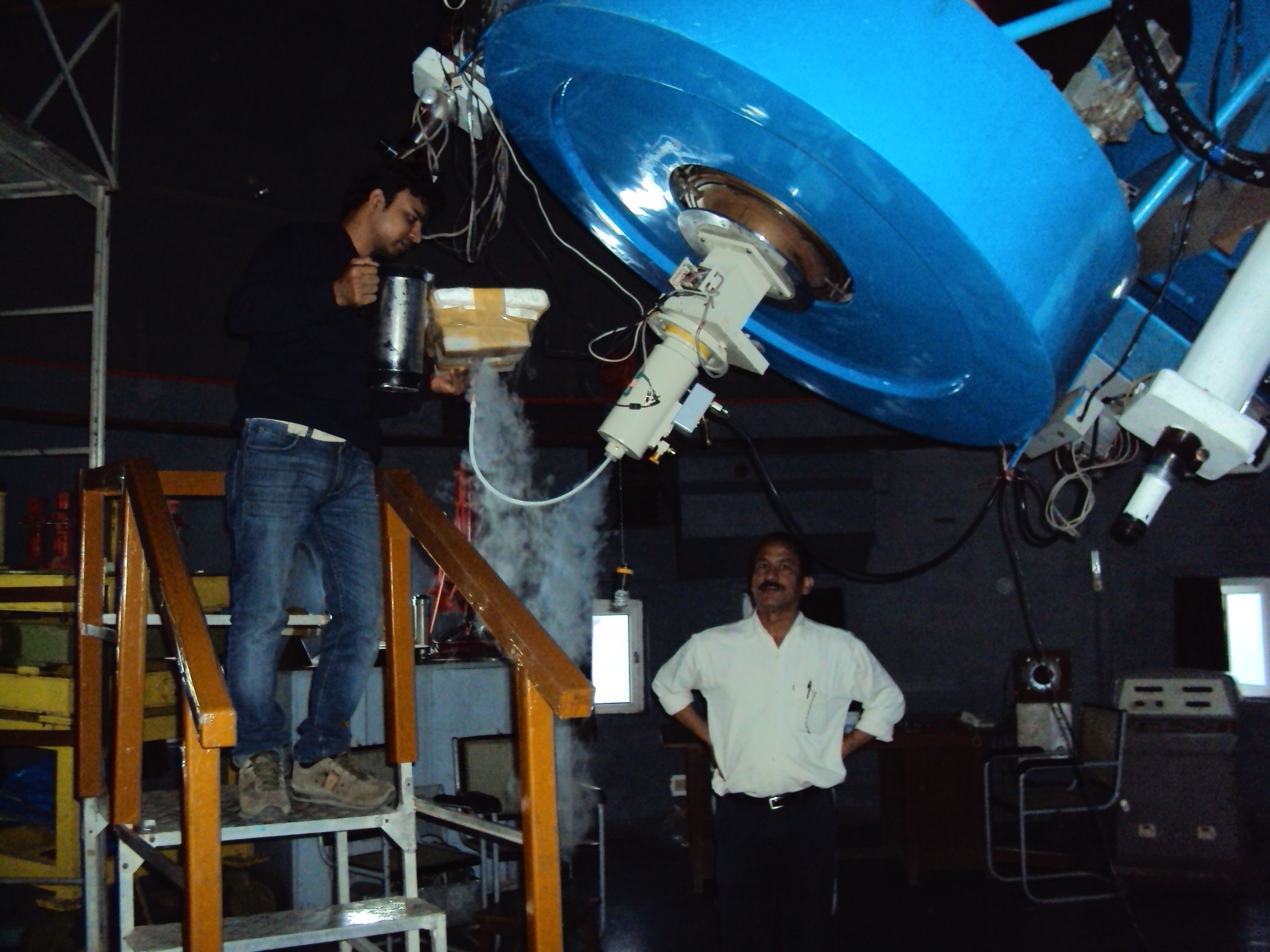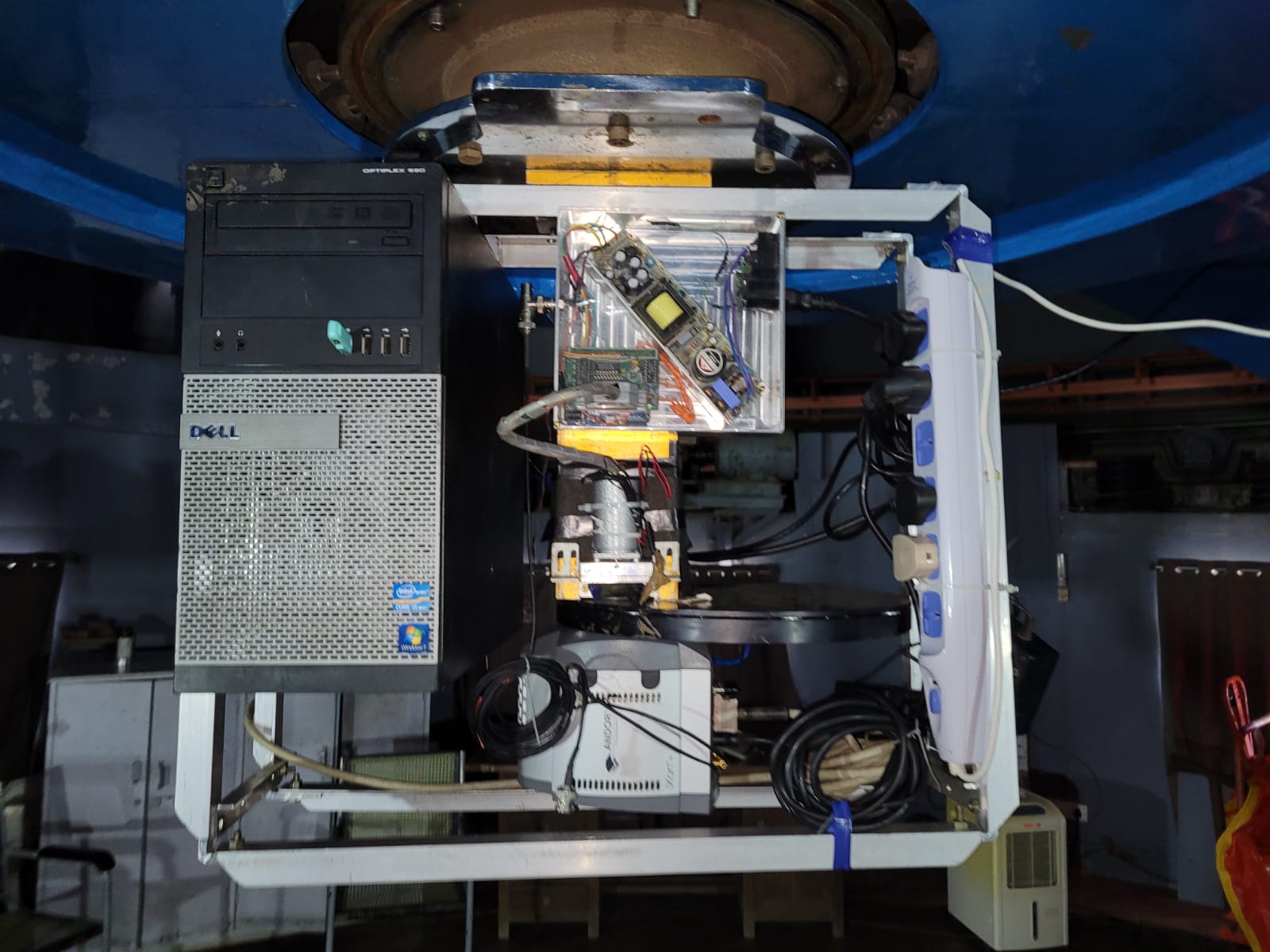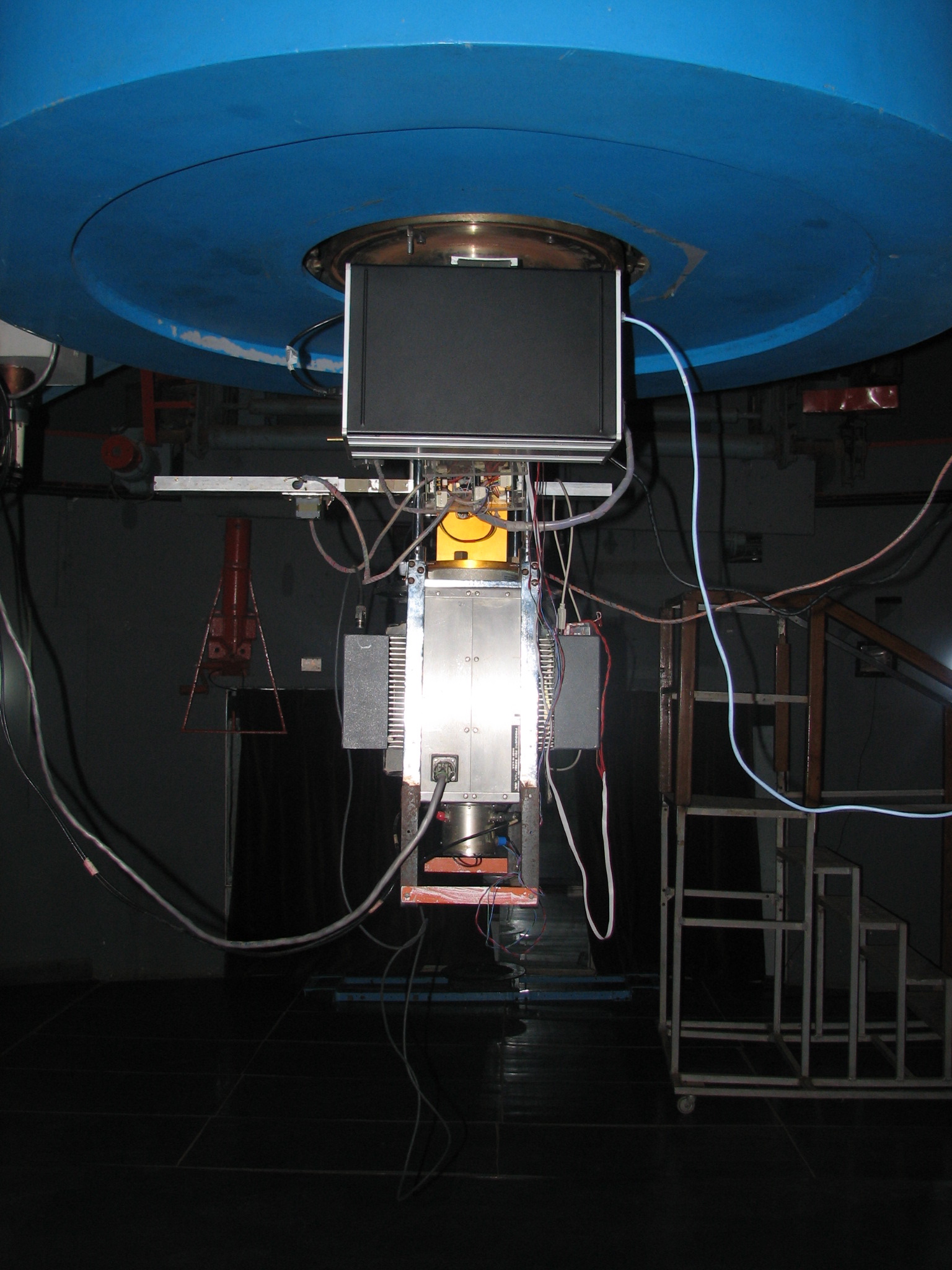PARAS-2 is a state-of-the-art high-resolution fiber-fed spectrograph that operates in 380-690 nm wave-band, aimed to unveil the super-Earth-like worlds. The spectrograph works at a resolution of ∼107,000, making it the highest-resolution spectrograph in Asia to date, which is under ultra-stable temperature and pressure environment, at 24 ± 0.001 °C and 0.005 ± 0.0005 mbar, respectively. Initial calibration tests of the spectrograph using a Uranium Argon Hollow Cathode Lamp (UAr HCL) have yielded intrinsic instrumental RV stability down to 30 cm/s.
Click here for more detailed information
PARAS (PRL Advanced Radial velocity Abu Sky Search)
The PRL optical fiber-fed high-resolution cross-dispersed echelle spectrograph (Prl Advanced Radial-velocity Abu-sky Search), which was
commissioned at the Mount Abu 1.2 m telescope in India in 2012. Data obtained as part of the post commissioning tests with PARAS show velocity
precision better than 2 m/s over a period of several months to years on bright RV standard stars.
For observations of σ Dra, a 1.7 m/s precision for a period of 2 years, and 3.5m/s on HD55567 have been demonstrated. PARAS is capable of
single-shot spectral coverage of 3800–9500 Å at a resolution of ∼67000. The RV results were obtained between 3800 Å and 6900 Å using simultaneous
wavelength calibration with a thorium-argon (ThAr) hollow cathode lamp or UAr (Uranium hollow cathode lamps).
The spectrograph is maintained under stable conditions of temperature with a precision of 0.01–0.02° C (rms) at 25.55° C and is enclosed in a
vacuum vessel at pressure of 0.1 _ 0.03 mbar. The blaze peak efficiency of the spectrograph between 5000 and 6500 Å, including the detector, is
∼30%; it is ∼25% with the fiber transmission. The total efficiency, including spectrograph, fiber transmission, focal ratio degradation (FRD), and
telescope (with 81% reflectivity) is ∼7% in the same wavelength region on a clear night with good seeing conditions. The stable point-spread
function (PSF), environmental control, existence of a simultaneous calibration fiber, and availability of observing time make PARAS attractive for
a variety of exoplanetary and stellar astrophysics projects.
Light is injected to the spectrograph using combinations of octagonal and circular optical fibers A and B which carries star light and spectral
light from spectral lamps for calibration respectively and simultaneously.
Click here for more details and recent discoveries
FOC – Faint Object Camera-Imager
The Faint Object Camera (FOC) is a key instrument for the 2.5m Telescope at Mt. Abu Observatory which is in use since October 2022. The major science cases are extragalactic astronomy, GRB observations and photometric observations across various wavebands.
Specifications:
Detector: 4k × 4k deep depletion back-illuminated CCD
Pixels: 4096 (H) × 4108 (V)
Pixel size: 15 μm × 15 μm
Wavelength Range: 350 nm to 900 nm
Field of View (FOV): 10′ × 10′
Pixel scale: 0.15″/pix
Filters: SDSS filters – u′, g′, r′, i′, z′
Limiting Magnitude: 21 mag in 10 min exposure
Speckle Imager
Ground-based astronomical observations are significantly affected by atmospheric turbulence, which degrades image quality. Speckle Imaging is a powerful technique that mitigates these effects by capturing rapid, short-exposure images, effectively freezing atmospheric distortions, and enabling near-diffraction-limited resolution. A speckle imager is installed on one of the side ports of the PRL 2.5M telescope.
Specifications:
Detector: Trius PRO-814, ICX814AL
Pixels: 3388 (H) × 2712 (V)
Pixel size: 3.69 μm × 3.69 μm
Field of View: ~2.15′ × 1.7′
Pixel Scale: 0.038″/pix
Filters: V band (Johnson)
Limiting Magnitude: 17.5 mag in 10 min exposure
Exposure Time: 2–50 ms
PRL Robotic Low-Resolution Spectrograph (PRLRS)
The PRLRS is a fully robotic low-resolution spectrograph, designed and developed in-house using off-the-shelf components. It automates the full observation process including:
• Star pointing and field identification
• Focus and slit centering
• Wavelength range and exposure control
• Calibration frame acquisition and quick-look spectrum generation
Specifications:
Resolving Power: ~2000
Wavelength Coverage: 390–750 nm (in 3 exposures of 120 nm each)
Slit Width: 100 μm → 1″ on sky
Overall Efficiency: ~25%
Science Cases:
Early-time classification of optical transients, and high-cadence spectral monitoring of GRBs, supernovae, TDEs, and other explosive events.
Mt. Abu Faint Object Spectrograph and Camera – Pathfinder (MFOSC-P)
Mt. Abu Faint Object Spectrograph and Camera – Pathfinder (MFOSC-P) is a fully inhouse developed imager-spectrograph for PRL 1.2m telescope at
Gurushikhar, Mt. Abu. MFOSC-P uses the focal reducer concept to provide seeing limited imaging with a sampling of 3.3 pixels per arc-second on a
1K X 1K CCD detector. The corresponding field of view is the 5.2 X 5.2 arc-minute square and Bessell’s B, V, R, I as well as a narrow-band H-α
filters are used for imaging modes. MFOSC-P provides spectroscopy in the spectral range of ~4500-8500 angstroms with three different plane
reflection gratings. These gratings provide resolutions of 500, 1000 and 2000 at their central wavelengths of 6500, 5700, and 6500 angstroms
respectively. MFOSC-P was developed between 2015-2019 as a pathfinder instrument for a next-generation instrument on the PRL’s 2.5m telescope.
MFOSC-P was successfully commissioned on the PRL 1.2m telescope in February 2019. Its designed performance was verified with several laboratory
characterization tests and on-sky commissioning observations.
MFOSC-P is a facility instrument and is being utilized for different science programs of Astronomy and Astrophysics division, e.g., spectroscopy
of M-dwarfs, novae & symbiotic systems, intra-night variability of AGNs, photometric studies of X-ray binaries etc.
Click here for MFOSC-P instrument details and list of publications from MFOSC-P
Near Infrared Camera/Spectrograph(NICS)
A new Near-infrared Camera And Spectrograph(NICS) has been commissioned (2009) at PRL's 1.2 m infrared telescope at Mt. Abu IR Observatory.
Configuration oF NICS:
Array configuration: 1024 x 1024 pixels (HAWAII-1 from Teledyne, USA)
Field of view: 8 X 8 sq.Arcmin (un-vignetted)
Pixel Scale: 0.5 arcsec/pixel
Resolving power in spectroscopy mode: 1000
Filters :
Filter wheel 1 : Open, Y, J, H, K, Ks, (Barr-new MKO)
Filter wheel 2 : Open, IJ, JH, HK, NB1(Brγ), NB2(H2 1-OS(1))
Tunable filter using Fabry-Perot Etalon resolution : 3000 at 2.16μm and 2.24μm
Science programs using NICS:
- Novae and supernovae
- Starforming regions and Milky Way Science
- Asymptotic giant branch (AGB) stars
- Active galaxies
Liquid Nitrogen cooled CCD Camera
Configuration of Pixcellent camera:
Array format: 1296 x 1152 pixels
Pixel size: 22 micron
Field of view: 6.5 x 5.5 sq.Arcmin (un-vignetted)
Read noise: 4 electrons
Pixel Scale: 0.29 arcsec/pixel
Filters :
Broad band : U, B, V, R, I (Johnson-Cousins filter set)
Narrow band : Hale-Bopp comet filter set
EMPOL (EMCCD based Optical Imaging Polarimeter)
EMPOL is an EMCCD based Optical Imaging Polarimeter for the PRL 1.2m
Cassegrain-type telescope situated at Gurushikhar, Mt. Abu. The
developement of this instrument has been fully done inhouse at PRL. EMPOL
uses an Andor iXon 1K X 1K EMCCD detector (with 4 X 4 binning) and a
combination of a halfwave plate with a wiregrid polarizer as polarization
optical elements. It has nearly 0% instrumental polarization. Total number of
steps per rotation of the halfwave plate are 48. EMPOL can accommodate
maximum upto 3 arcmin X 3 arcmin field of view.
The filterwheel on EMPOL provides standard Johnson-Cousins (B, V, R, I)
filters, SDSS (g, r, i, z) filters, and (blue, green, red) continuum filters. With a
total effective exposure of 50-60 minutes, one can reach upto 16-17
magnitude for faint objects in polarization mode. Extensive observations
have been carried out with this instrument covering a broad category of
astronomical sources e.g. near-Earth asteroids, comets, Lynds dark nebulae,
open clusters and AGN such as blazars.
LISA
LISA is a low resolution (R~1000) spectroscope which can be used with PRL 1.2m
as well as 50cm telescopes. The LISA spectroscope is particularly dedicated
to the spectroscopy of weak objects such as comets, novae, Supernovae,
weak variable stars, redshift of distant galaxies or quasars or confirmation of
planetary nebulae. It is functional within near-UV and optical wavelength
ranges (375-700 nm). It has a platescale of 0.326 arcsec/pixel.
Its calibration module has an Argon / Neon lamp which provides a large
number of emission lines over the main spectral range of LISA. This same
module is equipped with a Tungsten lamp to produce flats. Thanks to its
reflective slit, the Lisa makes it possible to position and hold the target in
the slit with precision. A guiding camera (not supplied) allows to enslave the
movements of the telescope (autoguiding), and ensure optimal observation.
PRLPOL (PRL Optical Polarimeter)
PRLPOL is an in-house built photo-polarimeter The polarimeter has been
used for polarization observations of comets and active galactic nuclei as
well as evolved stars. It has capability to measure polarization as low as
0.1% very accurately. Currently the standard UBVRI filters and the IAU/IHW
comet filters are available for use with this instrument. This instrument
is under refurbishment.
